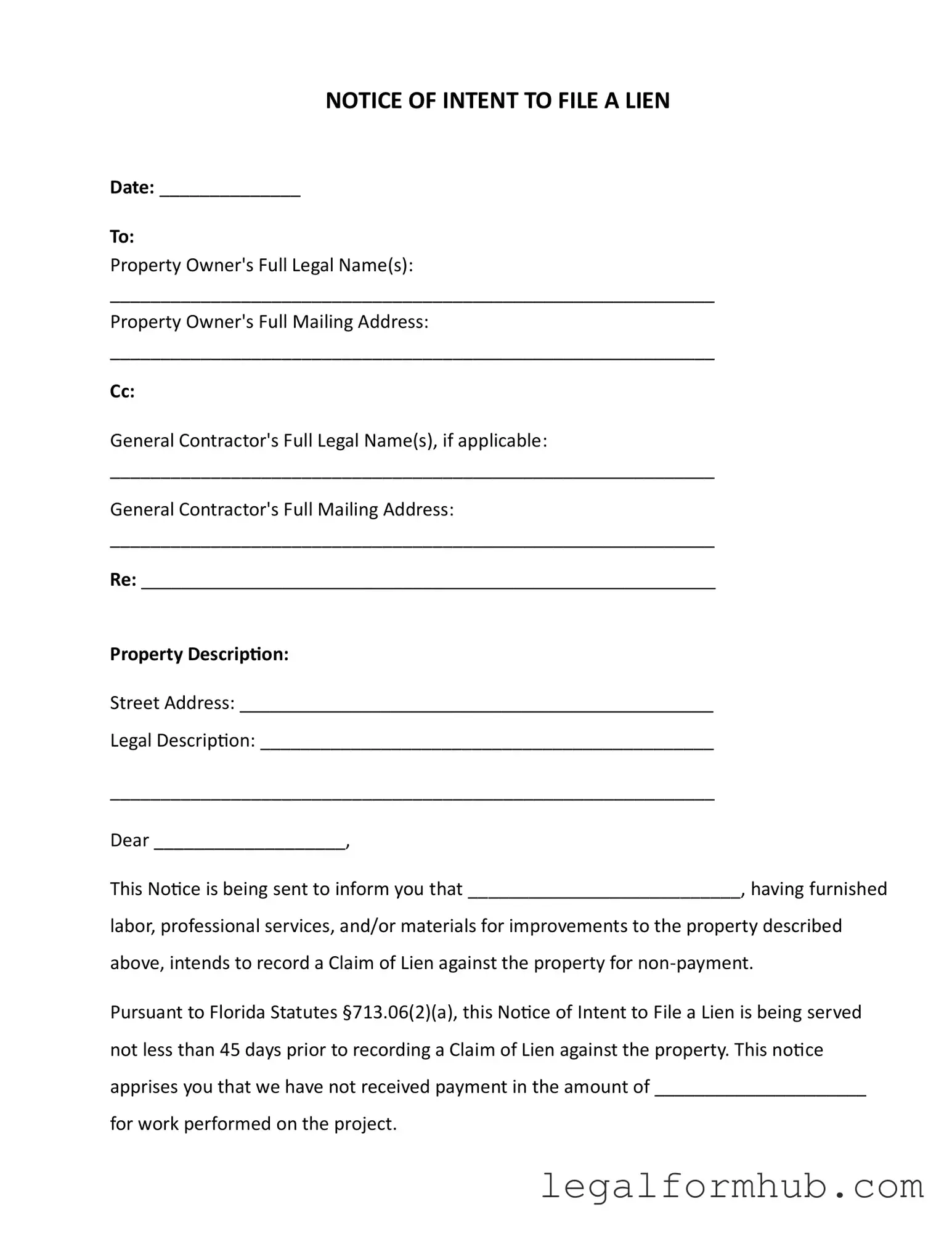The Notice of Commencement is a document that serves a similar purpose to the Intent to Lien form. It is filed by property owners to officially notify the public that construction is about to begin on a property. This notice provides essential information, including the property description, the contractor’s name, and the nature of the work. Just like the Intent to Lien, it aims to protect the rights of contractors and subcontractors by establishing a clear timeline for when work will commence, thus preventing potential disputes over payment and lien rights.
The Notice of Non-Payment is another document closely related to the Intent to Lien. This notice is issued when a contractor or supplier has not received payment for work completed or materials provided. It informs the property owner of the outstanding balance and serves as a warning that failure to settle the debt could lead to the filing of a lien. Both documents are proactive measures taken to secure payment and protect the rights of those who have contributed to a property’s improvement.
The Claim of Lien is a critical document that follows the Intent to Lien. Once the required notice period has passed without payment, a contractor or supplier can file this formal claim against the property. The Claim of Lien establishes a legal right to the property until the debt is satisfied. Similar to the Intent to Lien, it serves to alert property owners of potential legal actions and emphasizes the importance of resolving payment issues promptly.
The Release of Lien is another important document in this context. Once payment has been made, the contractor or supplier can file a Release of Lien to formally relinquish their claim against the property. This document clears the title and confirms that the debt has been settled. Like the Intent to Lien, it plays a significant role in the overall lien process, ensuring that property owners can regain peace of mind once their obligations have been fulfilled.
For those interested in purchasing or selling an all-terrain vehicle, understanding the specific requirements of an ATV Bill of Sale form is key. This document not only formalizes the transaction but also protects both parties involved in the sale. To learn more about this important form, visit the page on the necessary ATV Bill of Sale documentation.
The Notice of Termination is a document that can be issued when a contractor or subcontractor ceases work on a project. This notice serves to inform the property owner and any other interested parties that the work has been halted, which may also affect any existing liens. Similar to the Intent to Lien, it helps keep all parties informed about the status of the project and the implications of unpaid debts or unresolved disputes.
The Affidavit of Non-Payment is another document that may be used in conjunction with the Intent to Lien. This affidavit is typically filed by a contractor to affirm that they have not received payment for services rendered. It can serve as supporting documentation when pursuing a lien. Both documents highlight the importance of communication regarding payment and the necessity of taking action when debts remain unpaid.
Lastly, the Notice of Intent to File a Lawsuit is a document that may be issued when a contractor or supplier decides to take legal action for unpaid debts. This notice informs the property owner of the intention to pursue legal remedies, similar to the Intent to Lien, which serves as a warning before more serious actions are taken. Both documents aim to prompt resolution and encourage payment before escalating to litigation.
